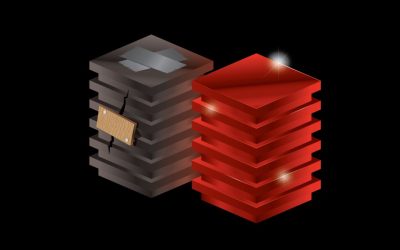The High Cost of Poor Planning
 A few appropriate costs early in a project can create major savings down the road and avoid a whole lot of aggravation in the process.
A few appropriate costs early in a project can create major savings down the road and avoid a whole lot of aggravation in the process.
DCS upgrades and migrations are a major part of our business at MAVERICK, and we work on 50 or more projects of various sizes in a typical year. With that many, we see all kinds of situations. Some are well planned and move smoothly while others have their challenges. The most common problem is watching what happens when companies stumble during the budgeting process, leaving them hunting for things to cross off the list when money begins to run out. Some important things end up getting cut as a result.
In some cases, we are called into a project in the middle and have to work with problems that have already taken root. One case in point involved a fairly basic migration program where the user was changing platform vendors. The old system was performing very erratically, so it ended up being a rip-and-replace job with the new vendor as primary support during phase one. Under the right circumstances, a DCS vendor can deliver a good project, so there was nothing wrong with the concept. The problems began to develop because the customer had not created an adequate project scope, which resulted in too small a budget to cover the work which really needed to be done. In an effort to stay within the underfunded budget, the configuration work was sent offshore. Again, this was not a problem in itself, but without a complete scope, it did not go well.
MAVERICK came on the project during phase two, and a variety of problems began to surface. The control code was not well written and tended to overload the controllers. Operators also ended up having to reboot their workstations a couple of times each day. One by one, the problems were cleaned up, but progress was hampered by system hardware issues and the scope inadequacies were never fully solved.
A major contributing factor was the company’s plan to save cost by using internal engineering resources, but as is common these days, they were too thin to cover the task. Time was running out, and rather than go outside for help, they simply left many parts unfinished. Money was undoubtedly a major consideration, but they could have avoided the problems if they had engaged a team experienced with front-end loading (FEL) processes at the outset. They could have also made major improvements to the system’s performance, adding improved HMIs and more effective alarm management. These things pay off handsomely in the long run, but they require up-front costs and engineering effort.
In today’s business environment, companies are leaner than they have been at almost any time in the last 40 years. Few have the in-house capacity to take on the migration of an entire facility from a 30-year old system to the latest technology. Even the basic tasks of locating all the field devices, evaluating their condition and determining whether they’re still being used are beyond most engineering groups. Cutting corners on this simple but critical action costs more in the long run.
In another location where MAVERICK technicians were working on a hot cutover, we discovered we were de-terminating and re-terminating wires that no longer had instruments connected. We did it because the loops were still in the DCS database and wired to the I/O. Obviously, the owner had not kept the documentation up-to-date. There were even a few tags where analog instruments had been replaced with Fieldbus devices but the old wires were still connected to the old system and were scheduled to be moved. The cost of wasted field labor is higher than having people make database updates, so this was an expensive way to cut costs. The people doing FEL work need to apply a robust methodology consistently to produce verifiable results.
Returning to the first example, if the company had made an appropriate effort at the outset to create a fully detailed scope for the project, many of the problems and additional expenses encountered later could have been avoided. Certainly, the FEL efforts would have added to the costs of the initial phase, but far more expensive fixes down the road could have been avoided.
This post was written by MAVERICK Leadership. MAVERICK Technologies is a leading automation solutions provider offering industrial automation, strategic manufacturing, and enterprise integration services for the process industries. MAVERICK delivers expertise and consulting in a wide variety of areas including industrial automation controls, distributed control systems, manufacturing execution systems, operational strategy, business process optimization and more.



